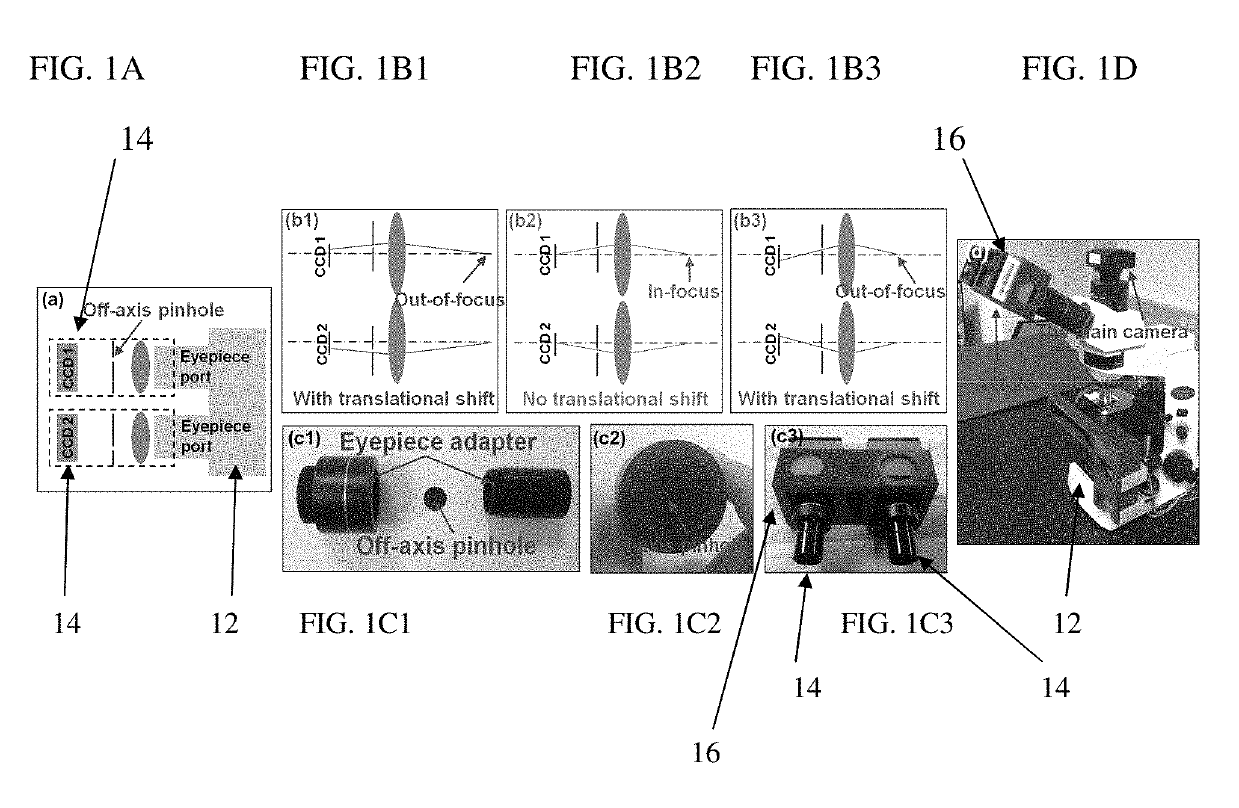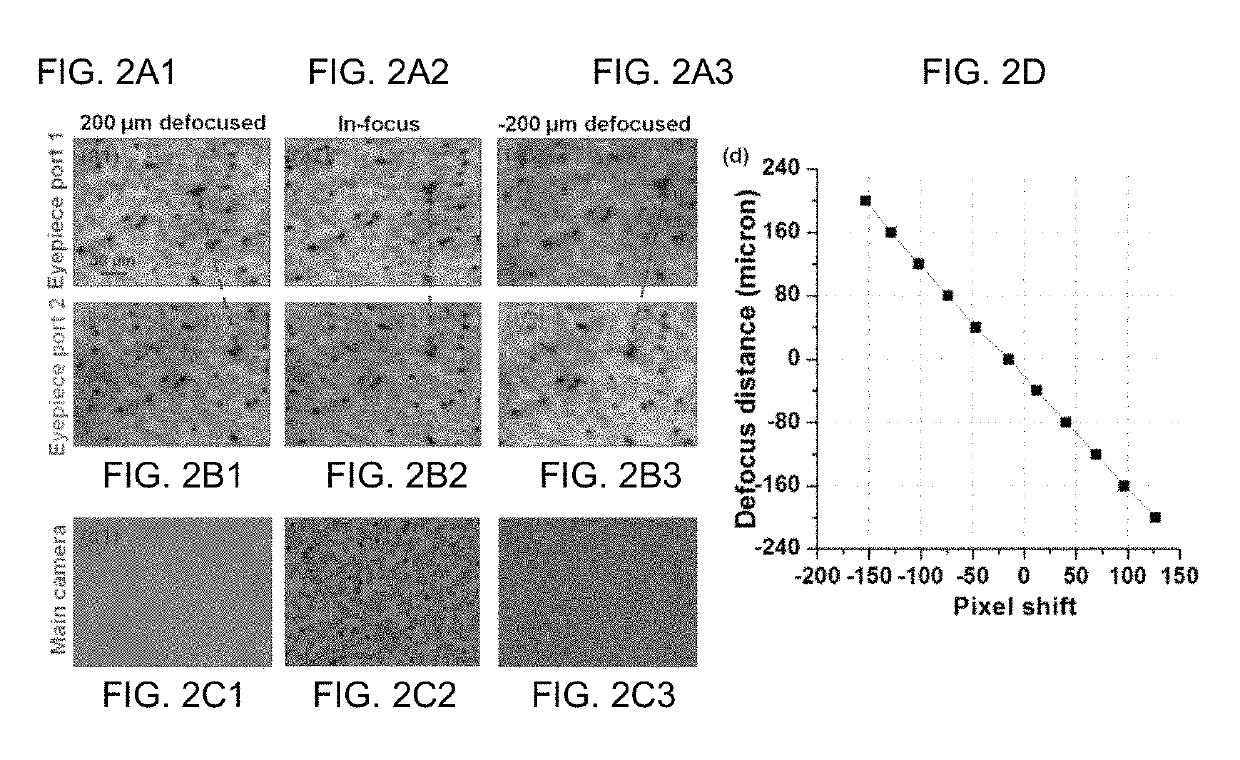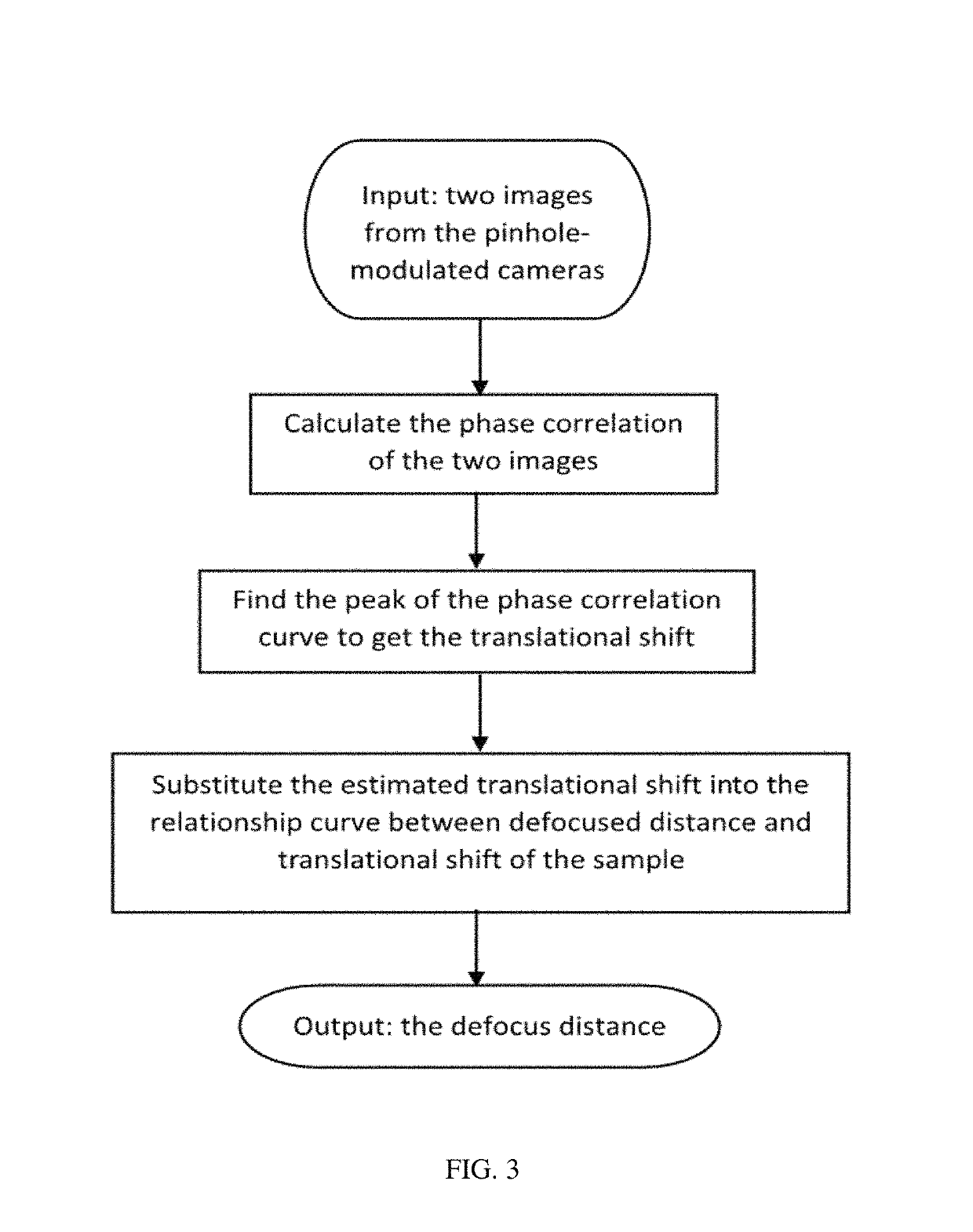Imaging assemblies with rapid sample auto-focusing
a technology of auto-focusing and micro-scopy, which is applied in the field of imaging assemblies with rapid sample auto-focusing, can solve the problems of failure to maintain the optical focal position, and achieve the effects of improving the diagnostic/prognosis of ailments, high speed, and low-cost instruments
- Summary
- Abstract
- Description
- Claims
- Application Information
AI Technical Summary
Benefits of technology
Problems solved by technology
Method used
Image
Examples
example 1
as for Auto-Focusing and Each Camera is Modulated By a One-Pinhole Mask
[0057]In some embodiments, one can attach two pinhole-modulated cameras 14 at the eyepiece ports of a microscope 12 for instant focal plane detection, as shown in FIG. 1A. By adjusting the positions of each pinhole of each camera 14, one can effectively change the sample view angle for the pinhole-modulated cameras 14. When the sample of the microscope 12 is placed at the in-focus position, the two captured images from cameras 14 will be identical (FIG. 1B2). When the sample is out of focus (FIGS. 1B1 and 1B3), the sample images will be projected at two different view angles, causing a translational shift in the two images. The translation shift is proportional to the defocus distance of the sample. Therefore, by identifying the translational shift of the two captured images, one can recover the optimal focal position of the sample (e.g., the in-focus position of the sample of microscope 12) without a z-scan of t...
example 2
for Auto-focusing and This Exemplary Camera is Modulated By a Two-Pinhole Mask
[0083]In another embodiment and as shown in FIG. 7, one can attach one camera 114 to a microscope. Exemplary camera 114 is attached / mounted at the epi-illumination arm of the microscope for auto-focusing.
[0084]For camera 114 and as depicted in FIG. 7, one can insert a two-pinhole mask having two pinholes at the Fourier plane of camera 114 (the auto-focusing module 114). Therefore, a captured image from this camera 114 contains two image copies of the sample, as shown in FIG. 8A (and as shown in FIG. 8B; and as shown in FIG. 8C).
[0085]If the sample is placed at the in-focus position, these two copies from one image do not have a lateral distance between them. If the sample is out-of-focus (e.g., FIG. 8A), these two image copies contained in the single image has a lateral translational shift (e.g., the distance between the two arrows in FIG. 8A). Based on this lateral translational shift, one can recover the...
PUM
 Login to View More
Login to View More Abstract
Description
Claims
Application Information
 Login to View More
Login to View More - R&D
- Intellectual Property
- Life Sciences
- Materials
- Tech Scout
- Unparalleled Data Quality
- Higher Quality Content
- 60% Fewer Hallucinations
Browse by: Latest US Patents, China's latest patents, Technical Efficacy Thesaurus, Application Domain, Technology Topic, Popular Technical Reports.
© 2025 PatSnap. All rights reserved.Legal|Privacy policy|Modern Slavery Act Transparency Statement|Sitemap|About US| Contact US: help@patsnap.com



